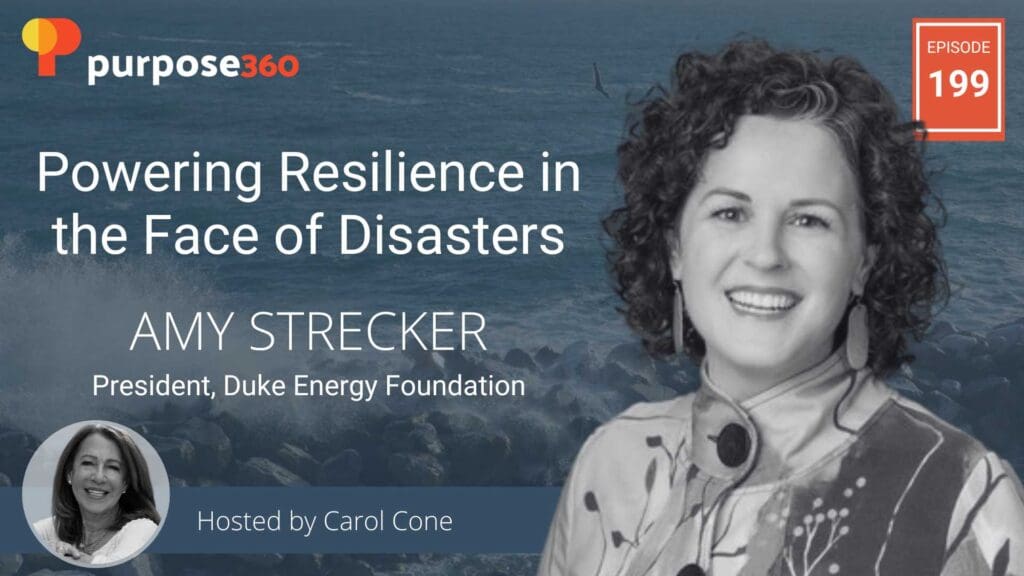With the frequency and intensity of natural disasters rising, companies are increasingly stepping up to play a role in relief and recovery. But while any financial aid is beneficial to and appreciated by responders and impacted communities, lengthy grant approvals, short-term funding, and rigid spending restrictions can unintentionally hinder responders instead of helping them.
We invited Amy Strecker, President of Duke Energy Foundation, to discuss how corporate foundations can best serve impacted communities after a disaster. Duke Energy Foundation is a leader in disaster response, prioritizing rapid aid, sustained recovery, and employee engagement. By fostering strong partnerships with local organizations and prioritizing both immediate relief and long-term rebuilding, Duke Energy Foundation ensures that communities are not just recovering—but emerging stronger and more resilient.
Disasters test the strength of communities, but they also reveal the power of collective action. Duke Energy Foundation’s approach demonstrates that when businesses step up with urgency, flexibility, and a long-term vision, they don’t just help communities rebuild—they help them thrive.
Listen for key insights on:
- Grantmaking strategies for disaster response
- Barriers a grant can create to a nonprofit organization and how to avoid creating them
- Mobilizing employees—regardless of their role—in disasters
- Building strong partnerships before disaster strikes
Resources + Links:











